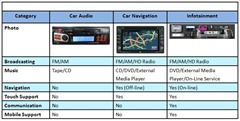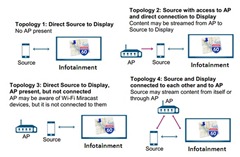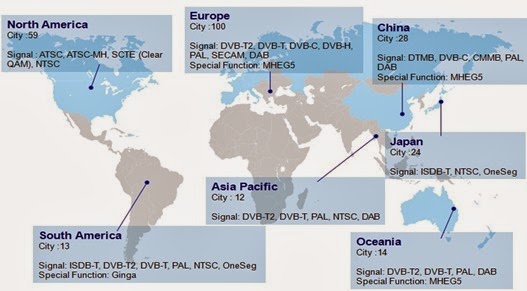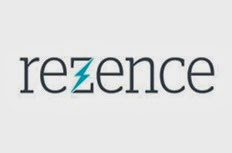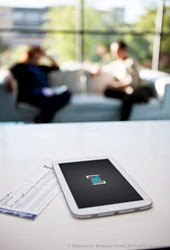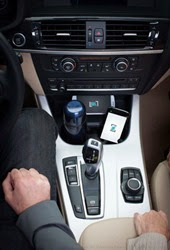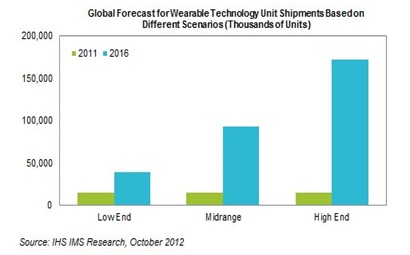Over time, HDMI has become a dominant multimedia interface that can be found in home theater equipment, personal computers, automotive electronics, and many mobile devices. Previous iterations of HDMI conquered the consumer electronics market by squeezing HD video and Hi-Fi audio signals through a single cable. In anticipation of market demand for Ultra-High Definition (UHD) displays, which offer four times the resolution of HD video, HDMI Forum published the new HDMI 2.0 specification in September 2013. This was followed by the publication of the corresponding HDMI Compliance Test Specification 2.0 in April 2014. These developments have enabled television manufacturers to begin launching UHD TVs in the 2nd half of 2014.
Thursday, December 4, 2014
Sunday, November 16, 2014
Wi-Fi Alliance CERTIFIED Wi-Fi Direct® Connections Provide Convenient High Speed Network Services Direct to Customers
Wi-Fi Direct® is an IEEE 802.11 wireless network protocol that supports direct wireless connections between compatible devices. Wi-Fi Direct uses peer-to-peer connections to perform common networking tasks. With Wi-Fi Direct users can quickly and securely share, print, display, and sync files between linked devices.
Tuesday, November 4, 2014
G.hn, the Ultimate Wired Broadband Solution?
Last century, the Internet was new and data flowed over IP to connect the world. Due to limited bandwidth, only text-based email and primitive web surfing was initially available to consumers. As networking technology advanced, multimedia content delivery became more viable and as a result, the desire for bandwidth has steadily increased. At this point, most consumers now expect stable and convenient broadband Internet service, especially at home. Since high-bandwidth home Internet service is now a reality in most modern countries, the delivery bottleneck has now moved from the curb to the living room.
Monday, September 1, 2014
Comparative Analysis of 802.11ac Wireless Access Points
As a leading global engineering validation and consulting company, Allion has already cultivated and built strong capabilities in the field of wireless device validation and testing. With the increasing penetration of the IEEE 802.11ac wireless standard across a wide range of electronic devices, increasing the overall availability and quality of compatible wireless access points (APs) is attracting more market attention.
Tuesday, August 26, 2014
“Testing & Certification”-The Driving Forces Behind The Screen!
Turn on your HDTV to watch a sports program, as if you were actually in the match. A diverse range of programs, from NBA (National Basketball Association), UEFA (The Union of European Football Associations) Champions League, to NPB (Nippon Professional Baseball), offer more entertainment choices for end users. It seems nothing special when talking about this recreation activity-watching TV. None the less, there is a force behind the screen driven by accumulated innovation and technology integration within the TV industry. From analog to digital signal eras, TV makers and system operators have ceaselessly developed next generation specifications via a series of standard compliance certifications to ensure AV quality for end-users.
Sunday, June 22, 2014
Testing on the Cloud: A Scenario-based Point of View on the Comparative Analysis of 6 Cloud Storage Services
In the age of information explosion, everyone has an easy access to all sorts of information craving, sharing, transmission and storage through the Cloud. Targeting the vigorous development of cloud computing technology, many vendors have introduced “Cloud Storage Services” to hit the market. In other words, the traditional HD and USB flash drive are old-fashioned actually; meanwhile, cloud computing has gradually changed the way of obtaining computing resources in our modern, mobile lives to integrate all user scenarios and transmission technology into the seamless communications.
Sunday, June 15, 2014
The Comparison between Consumer SSD & Enterprise SSD
According to iSuppli, the price of NAND Flash would continue to drop in 2014. The price of Solid State Drive (SSD) that uses semi conductor such as NAND Flash as data storage device would gradually become friendlier which would improve consumer’s purchase intention and accelerate the speed of penetration rate. Ultrathin design of SSD is not only used on consumer products, but also massively adopted on enterprise level products. At the same time, there are some products between consumer and enterprise level.
Sunday, May 25, 2014
Analysis of Technology Standards of Cable and Connector& the Certification Test Points
In view of high-frequency signal, mechanical properties, electrical properties and environmental factors that change in the performance of cables and connectors, developers need a complete package of professional laboratory tests and certification programs to ensure the products that can meet the quality conditions and can perfectly show the functional characteristics. In this article about validation technique, Allion experts will introduce different specifications of USB and emphasize on certification. It will also concentrate on products with different interfaces such as SAS 4.0, PCIe’s latest specification of OCuLink interface, and fiber optic cable AOC (Active Optical Cable) and will explain each interface’s characteristics. In addition, we will also introduce some equipment and testing content focusing on electrical test, mechanical test, and environmental test.
Wednesday, May 21, 2014
Tap-to-Connect: An Innovative Application of Wi-Fi Protected Setup with NFC
Meet Market Requirement, Upgrade Easy-to-Use & Strengthen Security Protection
With the mass usage of mobile devices and wearable technologies, more and more manufacturers have incorporated Near Field Communication (NFC) technology into their basic specification, improving the rapidity and convenience of interconnection. According to market research of IHS report, the world shipments of NFC-enabled cellular handsets will be increased four times more and the shipments can be up to 1.2 billion from 2013 to 2018. The research study also showed that except for the NFC’s transmission feature, the market demand has gradually moved toward NFC’s convenient applications such as data receiving, processing, storage and transaction. At this point, the security of information transmission is particularly important; it enables individuals, groups, or even a network of public space not to leak the important information easily and also eliminates the safety concerns indirectly.
Sunday, April 13, 2014
A Giant Step into Smart Home: A Technical and Logo Analysis of an Intelligent Home
In recent years, in addition of popular portable devices and wearable devices, another new trend gradually emerges - smart home, from the original condition of thunder, little rain, and instead began to catch everyone's attention. At this year's Consumer Electronics Show (CES), many technologies companies join the event; where it shows how the digital audio and video content to import and integration used in real life. It is worth noting that hardware brand manufacturers began to focus on the integrity of content services, expected in the hardware and software integration, industry ecosystem will be more robust, the combined effect will promote to the synergistic effect.
Monday, April 7, 2014
In-Vehicle Infotainment (IVI) System Drives You to the New Technology
Imagine this: When you are ready to drive, in-built camera in car indentifies drivers and passengers, seats adjust automatically to fit in passengers in the most comfortable way, navigator and infotainment system switch to programs according to your preference and synchronize with your smart phones and tablets, downloading music or TV shows through your portable devices. Meanwhile, it is unnecessary to touch monitors on your portable devices; in-car equipment can control APPs on smart phones such as picking calls, watching videos or listening to music. When on road, navigator would provide real-time traffic condition report and instructions and monitor vehicle condition to conduct risk management. Car would search the nearest (or even the cheapest) gas station when gasoline or battery dies. It’s all because of the extraordinary efficacy of In-Vehicle Infotainment (IVI) System, making smart drive come true.
IVI system is obviously a brand new practice of in-car computer, making transportation to be more than just moving one place to another. It carries a variety of inseparable information. Many famous car companies not only realize that IVI system would be the key point in the future, but also understand the characteristics of specialties and friendly usability would be the attractiveness to differentiate from competitors. Unlike in the past that you could only listen to the radios, music and watch films, new creative innovation would make your smart phones and other mobile devices connect with cars, which means the technology integration is a big challenge. According to Juniper Research, there will be 90 million cars that are about to surf on the Internet and able to work with the APPs on smart phones in 2016.
Chrat 1: History of IVI System
IVI System Is Ready to Roar
According to IHS Automotive Research published in March 2013, user’s thought towards IVI systems would switch from non-essential to mush-have. It is estimated that by the year of 2018, the revenue of semi-conductor for IVI will reach more than 8500 million USD. China, one of the most important markets for IVI system, will take more than half of the global revenue, about 5300 million USD on its own. In an IHS report in April 2013, it predicts that the revenue of wired and wireless Internet and connection technology related to semi-conductor for car use will rise from 430 to 540 million USD. Moreover, due to the rise of IVI, related industries are expecting to indirectly benefit from it. For example, there were only 2% of cars sold in 2012 that were equipped with head-up display (HUD), but it is likely to gain to 9%, which would be about 9 million, in 2020.
There are two main reasons behind the gaining surplus of IVI system:
1. Sales amounts of cars equipped with IVI systems is expected to be two times the scale of now by 2018.
2. In 2018, the average revenue of one set of IVI system will be more than 200 USD. Facing this gigantic market, related companies need to update the latest technology and prepare impeccable products to compete with rivals.
When a car is not just offering transportation service, but through IVI as a media to communicate with variable electronic devices as a new-era artificial-intelligence product, it is more significant to certificate its compatibility and interoperability (IOP) test of related hardware and software to make sure functionality, quality, and efficiency are good enough to head on the road. In order to let all those applications mentioned above perform its best quality, the standard should be enacted strictly to make sure the technology protocol between smart phones, APPs, information content, IVI systems and Internet connecting are able to work well as a whole. So users can communicate with cars effectively through smart phones.
IVI System Certification Plan Enhances Connect Ability
When IVI system is getting more advanced, its service coverage is also getting more complicated and wider. Asides from basic navigation system, video streaming, APPs and storage technology, in-car computer is the key to affect the entire performance of IVI system which is also a main factor for consumers to purchase. Allion recently has been contacting with many test requests regarding to IVI system to make sure that IVI system is able to co-work fluently with software and hardware components from different companies. Therefore, in this article, we will introduce three mainstream technologies that connect different portable devices with in-car computer. Moreover, since safety standard and certification request for car specs products are much stricter than ordinary electronic products, for example, it is compulsory for in-car storage products to pass mechanical and physical tests to check its stabilities for different pressures, temperature and humidity. Therefore, we would introduce environment tests for car specs as well.
- Wi-Fi Miracast™
Based on Wi-Fi Display technique, Wi-Fi Alliance establishes Wi-Fi Miracast™ technology and launches Wi-Fi CERTIFIED Miracast™ Certification Program. Devices that are Wi-Fi CERTIFIED Miracast™ certified mostly keep Wi-Fi CERTIFIED Miracast™ product’s joint usability, interoperability and safety. Via IVI system, user can watch clips or listen to music from smart phones, enjoying real-time content from A/V products. As in Pic 1, devices that adopt this technique can connect with each other without the need of extra Wi-Fi or connectors. In other words, device that is certified by Wi-Fi CERTIFIED Miracast™ has the Wi-Fi ability to connect directly and is not necessary to use existent access point. User can display photos, films or audio-visual media streaming service completely via smart phone on the car’s monitor.
Pic 1: Topology of Miracast™
According to Wi-Fi Alliance®, “Wi-Fi CERTIFIED Miracast™ adopts many famous and dependable techniques from Wi-Fi, including Wi-Fi CERTIFIED n (improved throughput and coverage), Wi-Fi Direct™ (device-to-device connectivity), Wi-Fi Protected Access®2(WPA2™, safety protection/ security), Wi-Fi Multimedia™ (WMM®, traffic management)) and Protected Setup™ and so on.” As a result, since Wi-Fi CERTIFIED Miracast™ certification program is based on the technical standards as mentioned above, when companies want their Wi-Fi products to get Wi-Fi CERTIFIED Miracast™ certification, their products are required to pass Wi-Fi CERTIFIED n, Wi-Fi Protected Access®2 and Wi-Fi Direct™ certifications.
- Bluetooth
According to a statistics by ABI Research, by the time of 2017, there would be 60 million cars equipped with Bluetooth technology, which has a market growth rate about 47% compared to 2013. Bluetooth technology is enacted by Bluetooth SIG for the purpose of hands-free communication and it is also one of the most popular technologies of short-range wireless standard. Through Bluetooth, mobile phone’s contact information would synchronize with IVI system, allowing users to conduct hands-free phone calls and text messages. Users are also able to surf on the Internet on IVI’s bigger monitor with the Internet connection ability from mobile phone. For vigorous smart phone market, companies launch new products every six months or every year and update Operating System (OS) every three to six months while it takes about three years to develop IVI system and its market life cycle lasts for ten years. Therefore, companies need to make sure compatibility between portable devices and IVI systems, especially the inter-connect ability between different versions in case compatibility problems happen which may cause higher cost recovery charge and customer complaints. For example, common compatibility issues between mobile phones and cars are as below: three-way communication, voice control, contact information, redial from history and so on. These may result from the different versions of Bluetooth and different supporting profiles which may affect customer’s purchase intention.
When manufacturers are developing products with Bluetooth technology, aside from Bluetooth Qualification Conformance Test, interoperability test with other devices is one of the most important factors that spring up Bluetooth technology. Therefore, it is necessary to take a whole test solution such as paring test with cameras, notebooks and smart phones. Allion has the newest devices and is equipped with state-of-the-art tools for conducting professional Bluetooth test, helping companies’ products with smoothly functioning with software or hardware from different brands and ensuring the integrity of Bluetooth technology.
- MirrorLink™
The Car Connectivity Consortium (CCC) was launched by various companies across different industries, which include well-known mobile phone manufacturers Nokia, Samsung and LG Electronics; vehicle manufacturers Daimler, General Motors, Honda, Hyundai Motor Company, Toyota, and Volkswagen; and system suppliers Alpine and Panasonic. MirrorLink™ is a logo standard enacted by CCC for in-car inter-connection transmission. MirrorLink™ is an open and common connectivity technical standard for IVI system and corresponding mobile devices, offering users the simplest and direct way to create seamless in-car communication environment.
MirrorLink™ is a rising industry standard, allowing users to establish a network connection between smart phones and IVI system via USB, Wi-Fi, Bluetooth, UPnP (Universal Plug and Play), VNC (Virtual Network Computing) and RTP (Real-Time Protocol) technologies. Some car manufactures have already adopted self-developing technologies such as ConnectedDrive from BMW, SYNC from Ford and Entune from Toyota. In the near future, what appears on the small monitors on smart phones would be seamlessly shown on car monitors, allowing users to use the buttons in the center console and even the buttons on the steering wheel to control their smart phone functions, such as hands free dialing, audio and video playback, navigation, mobile applications and so on
Not only does MirrorLink™ cooperate with smart phone developers or car companies to form an alliance, it is also working close with smart phone APP developers. Due to the importance of safety driving, the standard of APP is relatively stricter. There are two focuses for requirements specification: (I) Display interoperability, which specifies the size of icon, resolution and orientation. (II) User interface control, which includes single-touch and rotary/shift knob operation.
Besides, the system should not present information which may result in potentially hazardous behavior by the driver or other road users. A 5 x 7 (width-to-height) character matrixes shall be the minimum use for alphanumeric characters, in case of identification failure. Both automatic scrolling and user-controlled manual scrolling shall be prohibited. Moreover, drivers should be able to resume from an interrupted sequence of interactions with the system at the point of interruption or at another logical point. Therefore, it is not appropriate to transplant contend from smart phones when developing APPs for MirrorLink™. It shall follow EU’s regulation to both improve the service coverage of MirrorLink™ and make it easier for their entertainment, audio/video and drive-safe APPs to satisfy necessary requirements for user’s connected driving.
- Environmental Test for Automotive
There are four aspects for environmental test for automotive: Climatic Environment Test, Mechanical Environment Test, Chemical Environment Test and Electronic Environment Test.
1. Climatic Environment Test
Unlike ordinary consumer electronics, car has more opportunities to be exposed under different temperatures such as in extremely hot dessert or freezing snowy road. Here is a series of temperature tests aiming at storage equipment of IVI system: (I) Temperature Shock Test. It contains test of wide range of temperature from -40°C to 90°C and 90°C to 25°C. (II) Temperature Gradient Test. It is based on every manufacturer’s strict requirement to develop test of 25°C to -30°C or -30°C to 85°C. (III) Power Thermal Cycle Endurance (PTCE). For the performance test on IVI systems of heat generated by moving vehicles. (IV) Altitude Environment Test. It would test the performance when vehicles are under different pressure and temperature along with different altitude conditions.
2. Mechanical Environment Test
External shock may happen on your car since it’s always unpredictable on road. Therefore, a Mechanical Environment Test would simulate when car is being hit by 70G and 120G and to check the integrity and safety of car body.
3. Chemical Environment Test
Air pollution and acid rain may influence car body and even indirectly erode the lines inside the car. Chemical Environment Test would have car body, storage equipment and connecting line to be exposed with several chemical gases such as NO2, CL2 and SO2 for several days.
4. Electronic Environment Test
One of the most rampant electrical maladies showing up in automotive service bays today is the phenomenon known as voltage drop. Voltage Drop Test can ensure that switch contact, relay, wire, connector and so on are not erratic under real using environment. Moreover, since IVI systems adopt Wi-Fi, Bluetooth and Internet connection from mobile phone, it is significant to make sure devices with high frequency would not interfere with each other. Electro Magnetic Compatibility Test (EMC Test) is able to validate the performance of in-car storage and high-frequency device that are free from noise and interference.
Pic 2: IVI system needs a multiple-technologies-platform validation to ensure
its functionality and integrity
Besides to the technologies as mentioned above that need certification, for users, User Convenience and User Experience (UX) are the most direct experience when it comes to “smart car”. Hence, it is necessary to have a professional expert team for related companies to design a cross-platform certification focusing on User Experience Design (UXD), improving IVI system performance and meet up with user’s expectation.
There are three kinds of available APPs on the market for automobiles: music broadcasting, life information and content integration. But we do believe that as long as the market goes maturity, it will appeal to more consumers. By the time car manufactures would open its system standard and the cooperation mode would be opener. It is estimated that the standard for content service developers will be lowered and more and more car manufacturers and developers will devote themselves to this industry, reaching a win-win situation. A proper test plan should follow manufacture’s requirements and car’s specialties thus precisely adjust to a multi-angle test plan that fits the singularity of the client, focusing on the details of standard specs and reducing potential ricks and root causes. With the raising heat of the market, IVI system’s scalability and interoperability will definitely be the keystone of success in the future. In order to make sure your IVI system is able to conquer the market, Allion’s self-designed testing solution is your one and only choice.
Sunday, March 30, 2014
What is UX (User Experience) & How to Increase UX (User Experience)?
What is UX (User Experience)?
According to ISO 9241-210, user experience is defined as "a person's perceptions and responses that result from the use or anticipated use of a product, system or service". User experience includes all the users' emotions, beliefs, preferences, perceptions, physical and psychological responses, behaviors and accomplishments that occur before, during and after use.
Sunday, March 23, 2014
A full-range of TV Streaming Database is Ready in Allion Labs
To verify that TV RF signals could function well anyplace and anywhere, TV related companies frequently conduct field tests over the world, equipped with their own products and equipment by consuming much time and money. Aiming to help partners resolve difficulties of field test, the engineering service expert, Allion Labs started to consolidate and update streaming data periodically over the world several years ago. Upon customer’s requests and test requirements, Allion Labs team members would record TV signals in different kinds of environments or several countries and send the purchased TV products back from locals. The collected signal data can help customers test timely signals, process product verification, detect errors, and save time and cost.
Before every single field test trip, Allion labs team members do put much efforts into the preparation, such as map, GPS setting, route plan, and the working places for recording and so on. Allion Labs perfectly understands the signal integrity and its effectiveness will vary with venues and environments surrounded by buildings. Signal noise interference usually occurs in a big city and strong signal is always being detected closer to TV signal towers. Signal inconsistence could be easily found in the suburbs. Besides, concerning a variety of recording places and a full-ranged TV streaming data, Allion Labs would conduct indoor cable TV recording through cooperating with local contact windows. It takes at least one month to arrange, discuss and simulate tests to make a trip happen.
Real challenges always come after the departure, particularly for those unfamiliar countries. Passing through the customs is the first challenge. In some developing countries, the customs would be picky or extort our members intentionally. Occasionally, it took certain tax fee to allow testing equipment brought in those countries. During the field test, it’s easy to encounter interrogation by the police due the specialty of equipment. In addition, recording equipment requires lots of power to function. To purchase bulky power suppliers or the batteries is a normal case. Meanwhile, for comparing test results, our team members have to deliver TV products with local specifications back to Allion Labs for customer reference. Time limitation, language barriers, transportation arrangement, and product selection will affect the schedule. A field test trip seems more difficult comparing with the convenience of Taiwan or the developed countries.
We always do the best to plan a trip, and understand the local situation and culture. Under any unfamiliar condition, emergency makes our members out of blue. Asians are sometimes the targets for bandits or gangsters. A field test is full of tasks and challenges.
Illustration One:Terrestrials of Global Digital TV Signals
Allion Labs would analysis and review the integrity of data, classify patterns and parameters in sequence, and do the filing. TV signals will vary by time and next generation techniques will be born anytime. For instance, for embracing the coming of 2014 FIFA World Cup Brazil and stimulating buying power of TV products with 4K signals, Japanese government is said to implant 4K TV signal step by step, starting from satellite, and then widely spread in digital broadcast. It is expected to broadcast real-time FIFA World Cup Brazil. For assuring the product specifications to fill in the physical environments, 4k related developers need to synchronize TV signal without time difference.
A full range of TV streaming data is part of Allion Labs assets and services which we will keep update for customers on regular basis. The data has incorporated signals of North America, Middle and South America, Europe, Japan and China; meanwhile, Allion Labs is also expanding signal territories of the other countries. Our own central signal generator conducts simulating and testing signals for TV manufacturers. The generator is able to send global broadcast signals, standard analog and digital images, in order to simulate the function of tested products in specific environments. The collected signals in Allion Lab are: DVB-T2/DVB-T/DVB-C, ATSC/SCTE, ISDB-T, DTMB- NTSC, SECAM, PAL, PAL/SECAM, ATSC-MH and CMMB. In our signal testing lab, Allion Labs could proceed different local tests on products, and simulate user scenarios.
As a professional of engineering validation and consulting, Allion Labs can provide the complete global streaming data, and conduct any random test of stability, compatibility and energy management of smart TV and Energy Star America Plan. In addition, Allion Labs’ one-stop testing and validation services can save time and money for each customer. We could provide scenario stimulation based on User Experience (UX) and offer competitive analysis. Based on these, customers are able to improve quality platforms, enhance product usability and get Allion Labs’ best support in each development stage.
Monday, March 17, 2014
CES 2014 Part II: The Alliance of A4WP and PMA Holds-up WPC Three Competitors Arise in Wireless Power World
Alliance for Wireless Power (A4WP) has launched its certification mechanism,“Rezence”, the official brand of wireless power technology in CES 2014. Apart from overcoming the first generation material and distance limitation issues, the optimized magnetic resonant techniques of Rezence empower multiple devices to charge simultaneously within a wider and longer charging distance and also provide more flexibility to increase wireless power scenarios. However, A4WP and PMA (Power Matters Alliance) signed a cooperating memorandum, together working on the development of two charging modes. The news is undoubtedly a bombshell for WPC (Wireless Power Consortium) who has comparative advantage of membership and product numbers in the wireless power market. To get more details of developments of the three dominating wireless power alliances, please refer to the link of Allion Labs technical trend, “Wireless Charging Powers Up Unlimited Future.”
An intensively competitive era comes along with the three dominant competitors arise. Technical theories of the three wireless alliances are originally different. Incompatibility among alliances and products perplexes and limits the consumer market. As to the wireless industry, the issue impedes the developments of both magnetic induction and magnetic resonance; it may lead wireless charging standards into a hydra-headed situation.
The current trend indicates that WPC has the most members and smoothly pushes the schedule to the market. Besides, WPC is undertaking the standards for wireless charging, striding into the potential magnetic induction and magnetic resonance futures. Its aggressive movement inevitably threatens A4WP, the magnetic resonance advocate and PMA, supporting magnetic induction individually. The threat indirectly created the cooperation opportunity between A4WP and PMA, accelerating the technology incompatibility and trying to balance the situation dominated by WPC.
It’s worth mentioning that the standards for wireless charging “Qi,” promoted by WPC, has its limitations of distance, below-5W charging, frequency overlapping with some other applications, easy to interfere with, and the inefficiency and the instability of the whole operation process (Upon this issue, Allion Labs has evaluated the performance of WPC wireless chargers, please refer to the complete report link: The New Era of Unlimited Battery Charging Technology: Allion Wired & Wireless Charging Test & Evaluation Report). On the contrary, through alliances, A4WP and PMA have turned to high frequency channels, taken advantage of Bluetooth 4.0 and Near Field Communication (NFC) techniques, and contributed to the development of multi-mode. In particular, A4WP is the first regulator of magnetic resonance, initiating the standards for wireless charging “Rezence’ while PMA provides the indoor convenience for the users in Starbucks and McDonald’s by widely installing the wireless charging pads. In other words, two alliances take the lead in wireless charging for the end-user market. Based on optimized compatibility of interaction and simplified techniques, A4WP and PMA signed up the preliminary cooperating agreement to create a win-win situation for the industry.
The collaboration agreement indicates:
- PMA will adopt “Rezence,” A4WP’s technique of magnetic resonance to the transmitter and receiver no matter if they are single mode or multi-modes.
- A4WP will adopt the standards for magnetic induction, simultaneously support multiple modes on magnetic inductive and resonant charging.
- A4WP and PMA aim to manage the whole wireless charging service by co-working on research and development of open network API.
Consequently, A4WP and PMA will share the charging techniques of magnetic induction and magnetic resonance with each other. User scenarios of magnetic resonance applications include long-distance charging, for example, electronic car charging, while magnetic induction can backup portable devices, such as the most common devices or car devices.
None the less, the corporation of two parties may not guarantee uniform techniques and standard specifications. To some extent, the techniques of magnetic induction differentiate from that of magnetic resonance. The frequency issue is the first consideration. A4WP operates on high frequency channel, 6.78 MHz and plans to establish 13.56 MHz multiple frequency. The frequency channel used by PMA is from 200 to 400 kHz. It is obviously difficult to converge the two different frequency channels. Secondly, the principle of magnetic resonance applied by A4WP should work at certain distance; however, the practical and the longest distance is 10 cm which is no significant differentiation from the magnetic induction. The technology still remains to be seen.
The reputation and capability of testing and validation solutions prompted Allion Labs to be invited by A4WP to the plugfest event. Through the event, Allion Labs provided critical issues by exchanging different point of views with A4WP and participating companies. These issues are not only helpful information but potential risks for the developers. Any protection mechanism for safety issues, for instance, extra object detecting, temperature and weight should be taken into consideration. Since A4WP intends to manage power with the combination of the advanced technology of magnetic resonant charging and Bluetooth, it is expected to open a new page in the future. When several portable devices are charging in the same area, the portable devices could connect the transmitter of the charger through Bluetooth. Once one device is full-charged, the transmitter could stop power supply through Bluetooth and distribute power for the other devices. This way could upgrade power management efficiency of TX.
It seems like the right time for A4WP to promote its standards for wireless charging, “Rezence.” As we know, communication protocol issues exist between Rezence and Bluetooth connections. Developers might seek assistances to improve its quality and efficiency from a professional certification lab in the future. Concerning WPC, except for its Europe and America market, WPC has a possibility to win the ticket in Asia due to the favors of Japanese companies. A4WP should be aware of the changeable market. As an expert of wireless charging testing and authorized Bluetooth Qualification Test Facility (BQTF), Allion Labs will keep focusing on the market dynamics and the latest related news.
Tuesday, March 11, 2014
CES 2014 Part I: The Post Smartphone Era with Wearable Technology
Another CES has come and gone and, undeniably, wearable technology, in the form of a variety of smart bands, smart watches and even smart glasses, will be absolutely the major focus of CES 2014. Functionally, wearable technology that doesn’t fall into categories, such as smartphone and smart TV with the emphases of software and hardware innovation, is talking about the applications of our daily lives and consumer markets including healthcare and fitness. Wearable technology, started in 2013, is an exploding product category, which we can find whether IT brands or sports brands have announced as the mainstream consumer products in 2014. According to the report from IMS Research (as shown below), 14 million wearable devices were estimated to have been shipped in 2011 with almost $2 billion in revenue. However, the market size and the share are projected to seem significantly different by 2016, when 171 million devices will be shipped to achieve up to $6 billion in revenue.
The applications of wearable technology, related to wireless transmission Bluetooth, data processing and detector sensor, have developed to collect, record and manage the data of user’s breathing, heartbeat, pulse, temperature, blood pressure and other physiological responses, sending to his/her smartphone or cloud service afterwards. Thus, Bluetooth technology especially for Bluetooth 4.0 which is famous for low power consumption and able to run streaming data in the low-energy mode for a long period of time, making Bluetooth 4.0 perfect for wearable technology. To ensure the quality of Bluetooth, the relevant certification process has become the critical issue. As the BQTF (Bluetooth Qualification Test Facility) accredited by Bluetooth SIG, Allion is going to provide the vendors with further assistances in conducting certification process, executing interoperability testing, making debugging analysis and providing real-time consultation service.
With the market saturation of smartphone, wearable devices are expected to hit different market without cutting-edge production technology and cost, and to meet the requirement of user experience and user scenario. We can say that CES 2014 could be also called “The wearable technology show” where many IT brands and sports brands including Sony, LG, Nike and Adidas have launched their own wearable devices.
The Smart Band, launched by Sony Mobile, comes in rubber material with the core to connect with the smartphone and tablet PC apps via Bluetooth. The follows of Smart Band could be the life-tracking of heart rate, pedometer and even for marathon. As shown above, Smart Band incorporates with a removable core which is capable of tracking your motion anywhere. Because Smart Band has no built-in display screen, the control and the interaction of smartphone becomes extremely important when users receive calls, messages and listen to the music.
LG’s Lifeband Touch is also a fitness tracker with built-in OLED touch screen by using Bluetooth to connect with smartphone to keep track of time, heart rate and related fitness records. Like Sony’s Smart Band, Lifeband Touch offers the basic features, including incoming call notifications, music playback and so on. In particular, LG’s innovative HRM (Heart Rate Monitor) earphones are not only for listening, but also feature PerformTek sensor technology which can more accurate measure blood flow signals, metabolic rate and maximum oxygen consumption (VO2 max) rate.
Because wearable technology is on the verge of becoming a multi-billion dollar industry; in addition to the IT industry, the global sports brands such as Nike and Adidas also announce the debuts of their own wearable devices. Overall, their market and functional positioning is more oriented toward fitness monitoring system, focusing simply on daily activity tracking and training strategy for the active runner who wants to track and record specific workouts. It’s worth noting that the future intelligent clothing called “Smart Textiles” will be embedded digital components with small computers or detector sensors to track more precise physiological coverage of the whole body; meanwhile, user can completely control the real-time physiological and physical activities.
Wearable technology is going to be a buzzword into the market inevitably. Allion has been keeping up with the times and showed concerns about the trend and development of smart watch (please refer to our competitive analysis test report, “New Friend on Wrist: Smart Watch Test Report”). Our insight is that the certification and validation processes of wearable technology are very essential to ensure its software and hardware integration and interoperability. Different from the past user scenario of IT industry, the vendors have to consider how to integrate the user experience with wearable device so that wearable technology could be a Cyborg with both organic and mechanical parts of human beings.
Thursday, February 20, 2014
Allion Competitive Analysis Test Report: HDMI Cables Quality & Performance
In recent years, HDMI has gradually replaced DVI or VGA and become the major audio/video transmission interface for all kinds of computers, smart TVs, over-the-top devices and blu-ray players. In response to this market trend which there is a wide variety of HDMI cables with significant difference in price and visual perception, how to make the best choice for all your purchasing HDMI cables is the important lesson. To help the consumers or buyers understand the quality of HDMI cables in the market, Allion (Allion Labs, Inc.) particularly analyzes the quality and performance of various types of HDMI cables.
Wednesday, January 15, 2014
New Friend on Wrist: Smart Watch Test Report
With the arrival of post-PC era, more and more smart phones, tablets and other portable devices are on the way. Many companies nowadays are devoted to developing wearable devices, such as Google, SONY, Nike and Qualcomm. Without question, smart watches are the most popular one among these. Although there are many smart watches from different companies on the marketplace, not all of them earn customers’ favor. Launched in September 2013, Samsung Galaxy Gear smart watch is poorly reviewed by industry experts and end users. It is rumored that the Galaxy Gear had a return rate as high as 30% in the US, as a proof that many customers are not satisfied with this product. According to Ian Fogg, an analyst of IHS, he concluded: "The device exhibits multiple shortcomings, including a high price tag, a short battery life, and its limited compatibility.” Through this case, we can see that smart watch in today is still an immature product, and has a lot to go before it gets big and red.
